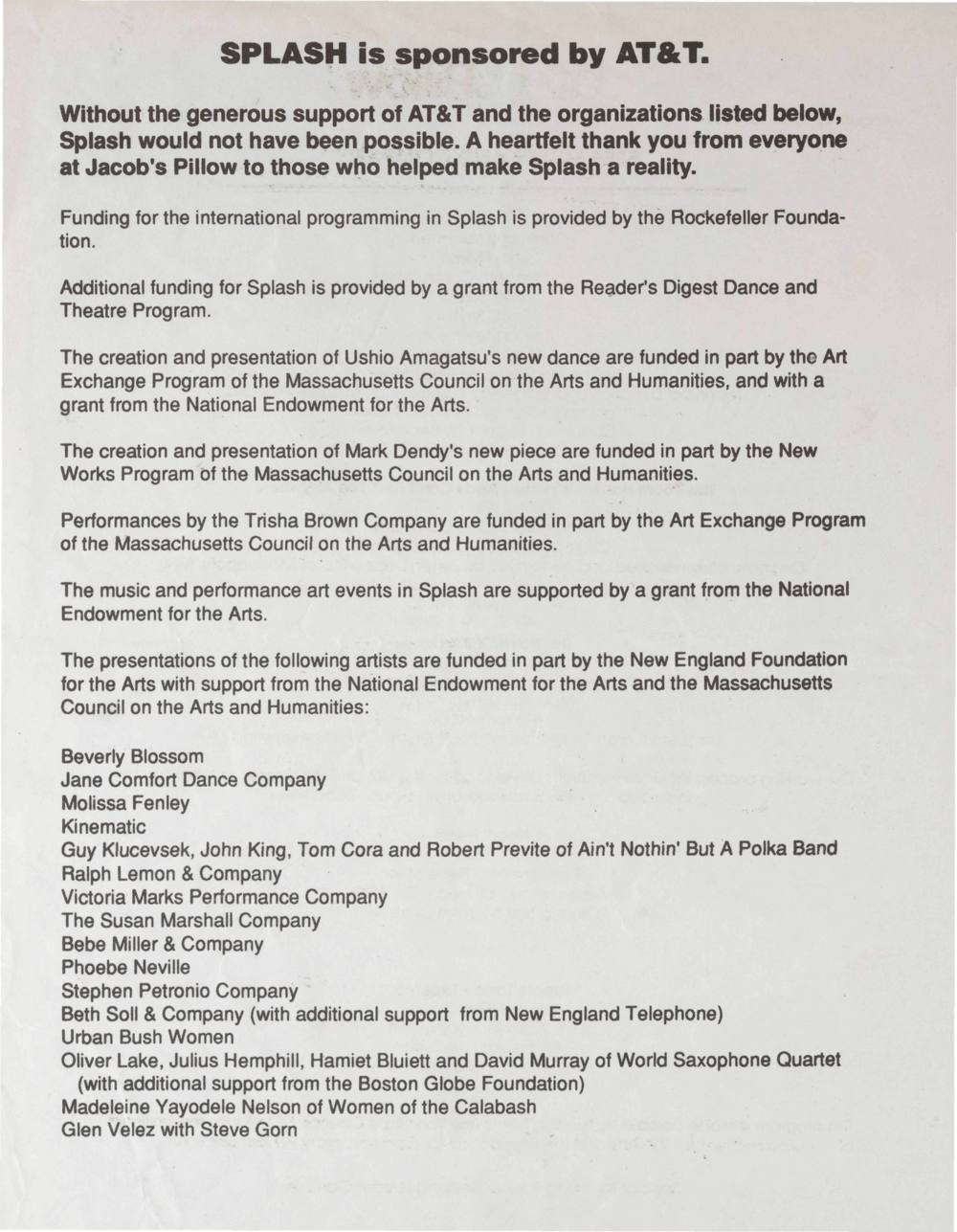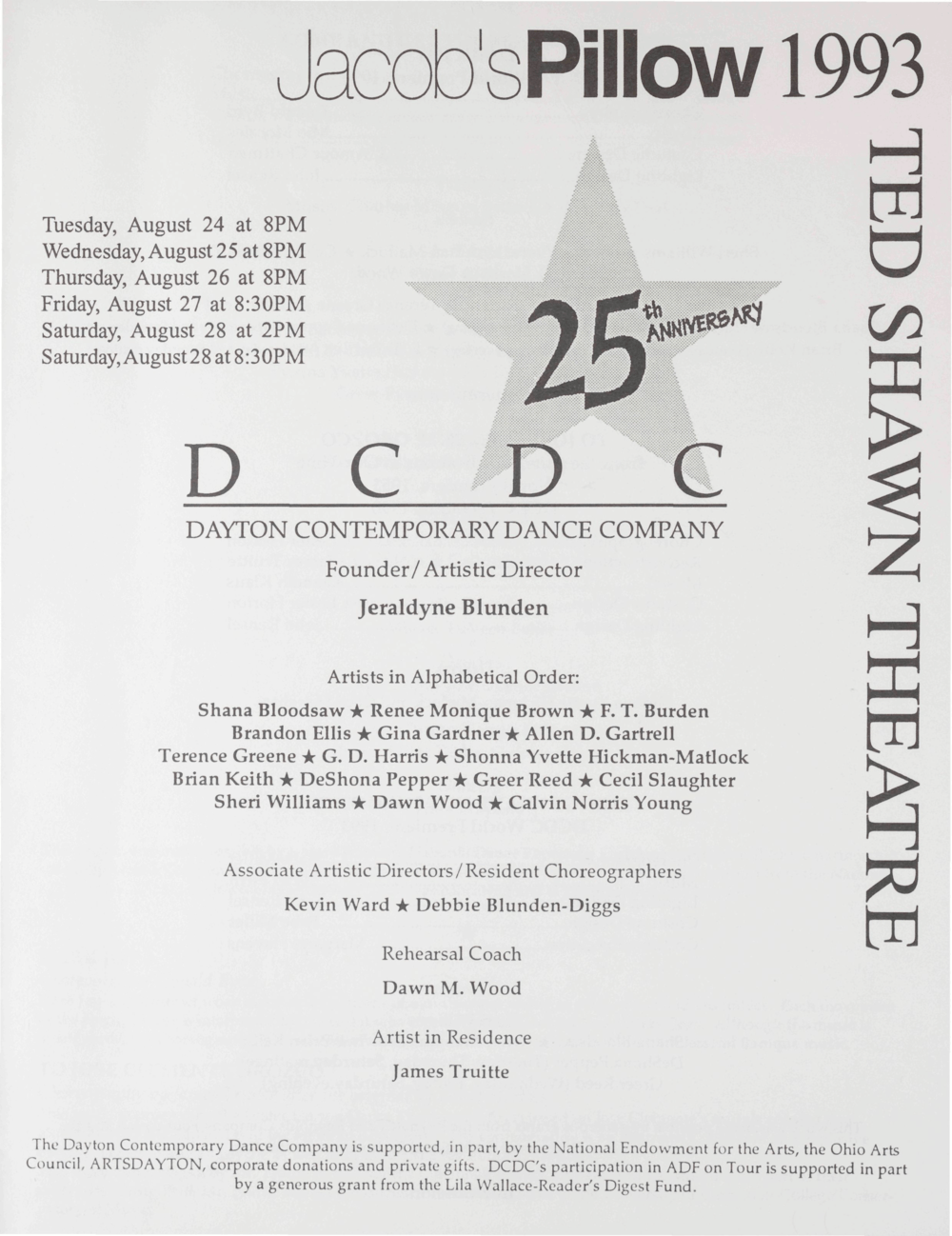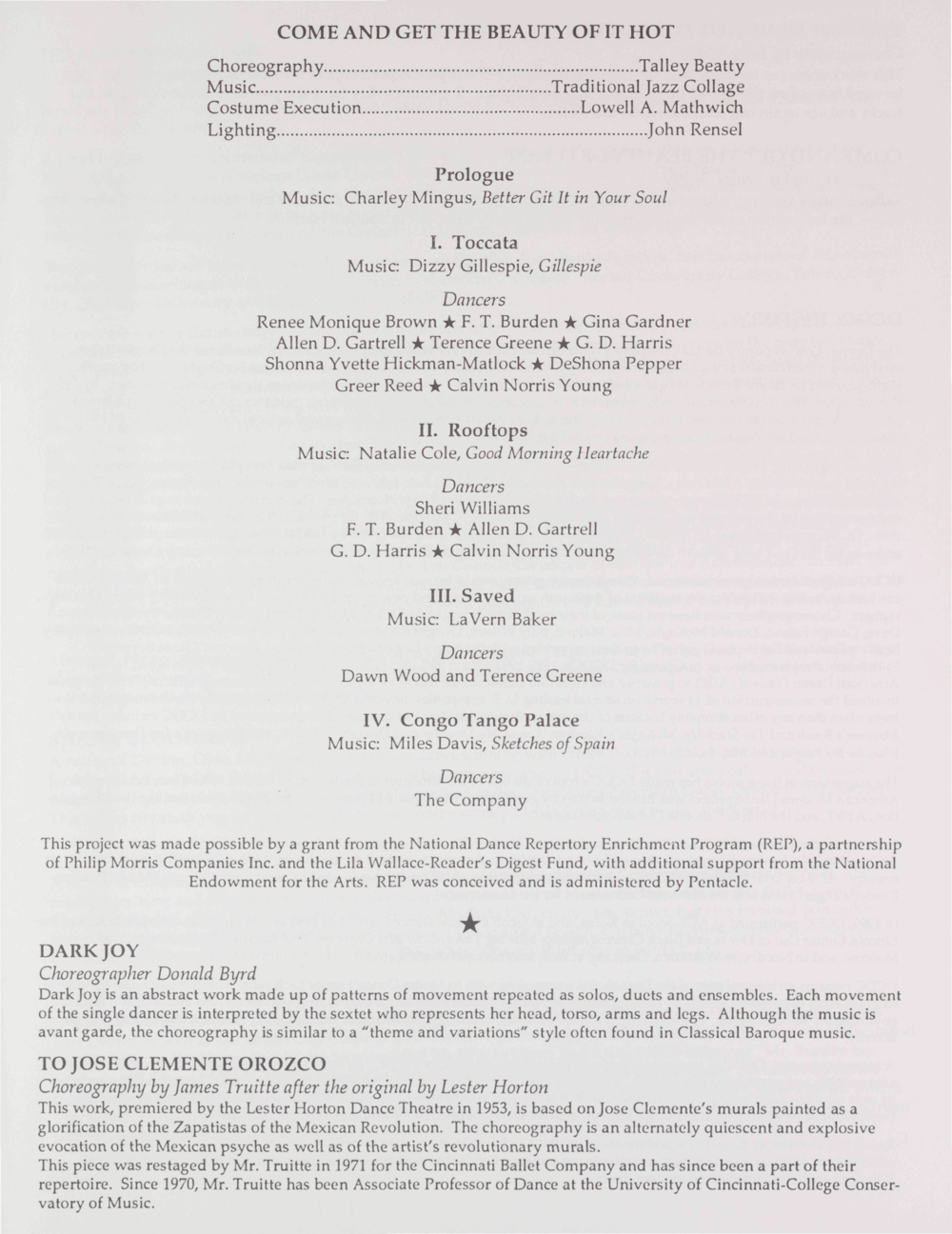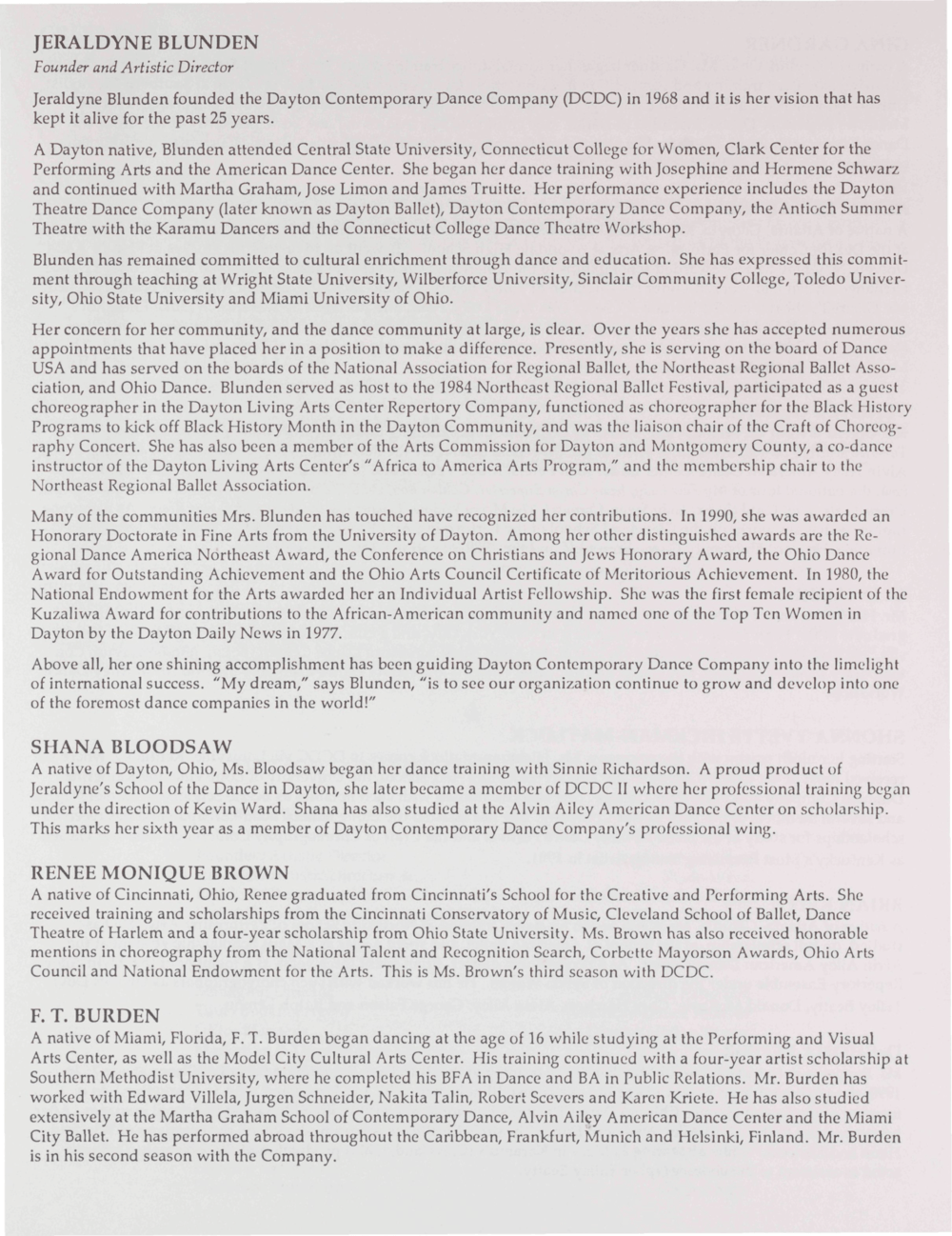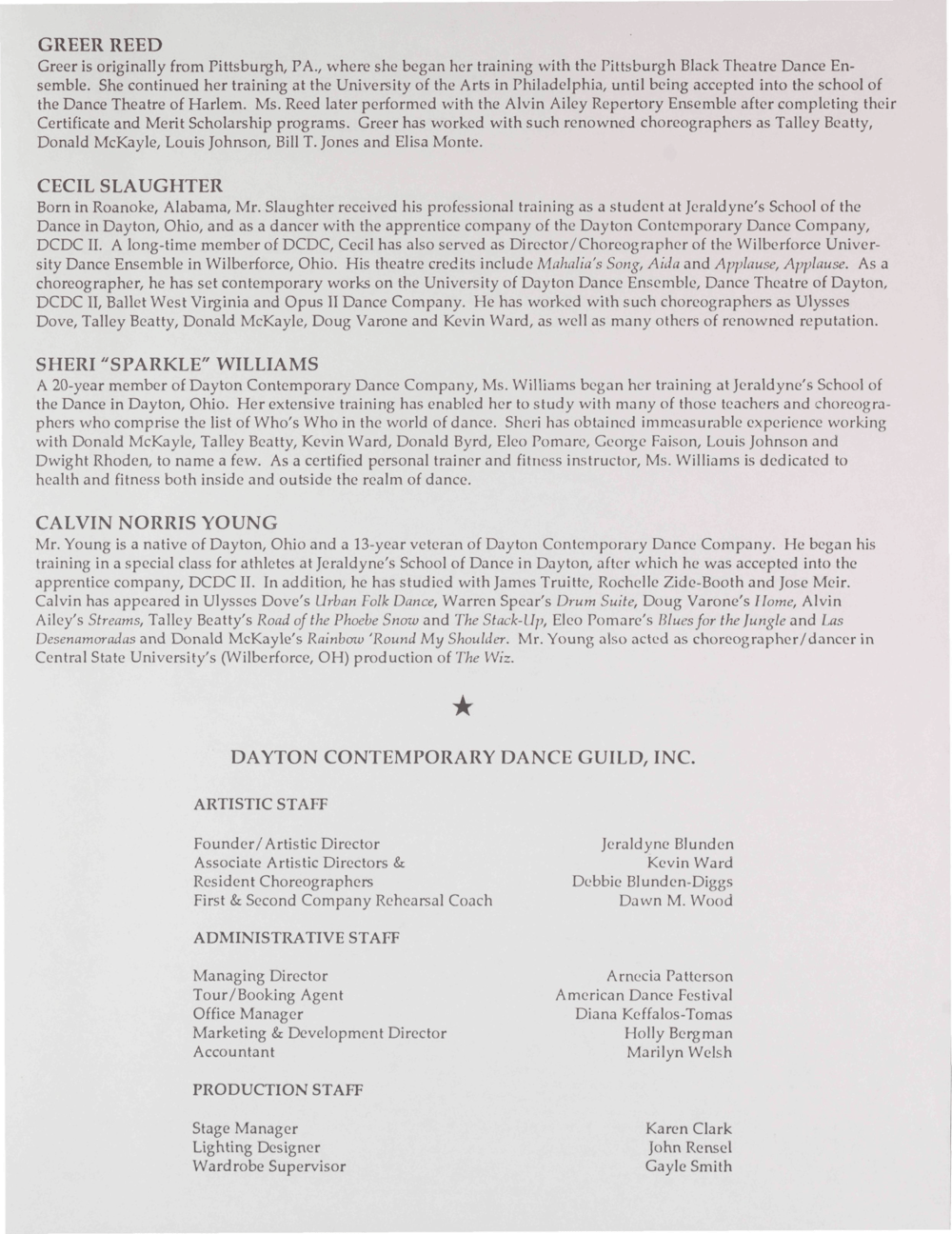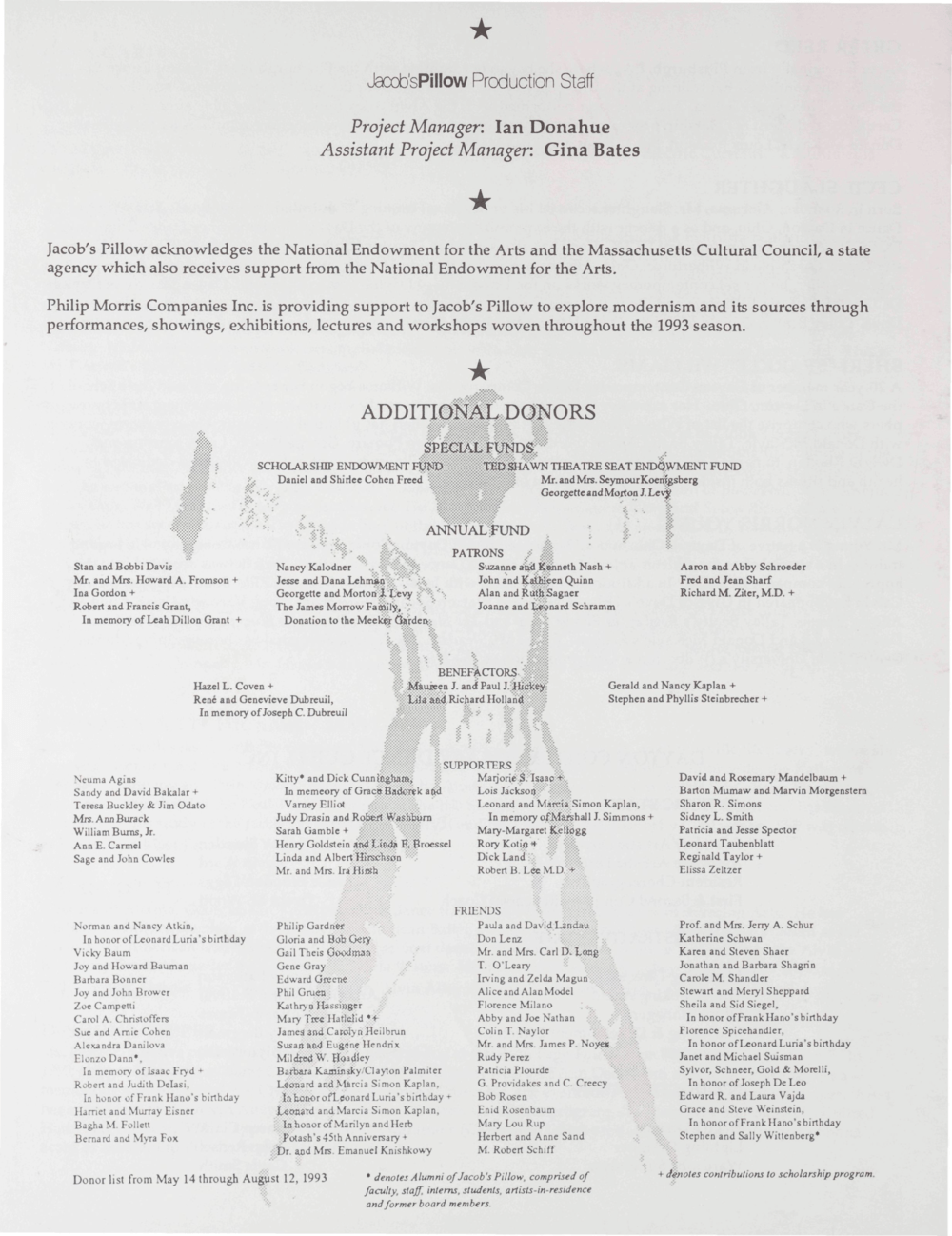Introduction
First and foremost, choreographer Bebe Miller is a humanist. She states unequivocally, “My choreographic work is rooted in exploring the human condition.” While this links her to modern dance choreographers of the past, such as Martha Graham and Doris Humphrey, as a postmodernist, Miller knows that there is no such thing as a universal or singular expression of that humanity. Rather since there are always multiple expressions, early on in her choreographic career Miller decided to form her company, so she could “carry out her investigation in the company of others.” Her career-long explorations into the relationships between people, and the differences among them, has led her to foster longterm relationships with collaborators, chiefly dancers, but also dramaturgs, installation artists, lighting and sound designers.
Miller’s choreography typically addresses pointed issues of present-day life, as art for Miller doesn’t exist in a vacuum. Choreographic inquiries couple with feminism, race and identity politics in Miller’s work. However, her means of communicating ideas is not to create stories that are danced through from beginning to middle to end. Rather, Miller intentionally fragments and abstracts ideas. As Pillow scholar Suzanne Carbonneau writes,
In her dances, meaning is a mirage, vanishing just as we begin to grasp it, and then tantalizing us to follow it into the distance where it shimmers and beckons us on.”
Miller’s movement style fits into the broadly defined category of postmodern choreography. For Miller, that means full-bodied, exuberant movement with rapid shifts in direction, speed, and focus. There are complicated gestures that hint at meaning, shaded by our own experiences. Typically, within the creative process, Miller uses improvisation to generate move ideas, with contact improvisation leading to signature full-bodied partnering.
Pillow Performances
Miller has described Going to the Wall (1998) as “a kinetic examination of cultural identity.” Miller and the dancers investigated how people interacted, probing questions such as who belongs to a group? Who doesn’t? How are group identities formed? Altered? Splintered? They also made the questions physical, deciphering how body parts interacted and the ways in which bodies might interfere with interaction.
Through the course of the development of the piece, Miller and her dancers explored the contrast between real responses to real situations and dancerly responses to those situations.
Bebe Miller Company returned to the Pillow in 2007 with Landing/Place. Landing/Place had an extensive creative development period, lasting three years. Two important events coincided to spark ideas for the work. The first was a trip to Eritrea, in eastern Africa. It reminded Miller of her idea of normal, even within the culture of a dance technique class, was not universal. Around the same time, the Advanced Center for Computing in the Arts and Design at Ohio State University, where Miller has served as a professor in the Department of Dance since 2000, asked her if she would be interested in using the motion capture lab. While Miller wasn’t sure what she wanted to do with the technology, she knew wanted to explore it.

Using their experience to generate movement ideas, Miller and the dancers composed movement sequences, and then captured them using the computer technology. For so much of her career, dance for Miller is not merely a body dancing, but the relationships between dancing bodies.

Those relationships—so powerful when viewed in performance, to Miller’s eye, were absent on the computer screen. In particular, if only one dancer wore motion capture sensors that the infrared cameras tracked when exploring robust partnering sequences, the resulting computer-generated dancer moved in surprising ways.
Faced with new technology and new possibilities, Miller selected collaborators expert in their own artistic arenas. Rather than trying to imagine how to express herself creatively in a new medium, Miller came together with Maya Ciarrocchi on video installations and Vita Berezina Blackburn on animation. Two other important collaborators were composer Albert Mathias and dramaturg Talvin Wilks. Miller and Wilks had collaborated on Going to the Wall. In this case, Wilks focused on ideas they had identified as important and kept them on the path to developing those ideas.
The resulting work, a collaborative effort of a variety of thoughtful artists, is exciting: the work thrums as the dancers wheel and toss finding places, however temporary, to land. It demonstrates that stunning dancing and deeply human connections can be felt in the most elaborate of electronic landscapes.
Miller’s relationship with Jacob’s Pillow is an enduring one. In addition to her seasons in the Duke Theatre, she first performed on Inside/Out in 1986, returning in 1988 as a part of the Splash Festival. She also received a Creative Development Residency in 2007.
Dayton Contemporary Dance Company premiered Miller’s Things I Have Not Forgotten in 1993, the sole female choreographer on the mixed repertory evening.
In reflecting on Miller’s choreography, Pillow scholar Suzanne Carbonneau concludes, “Miller’s dances are exemplars of the postmodern condition that presupposes uncertainty. Always, there is an acknowledgement of point of view—that your world (composed of the sum of your background and experiences) is not mine.”
PUBLISHED March 2017

